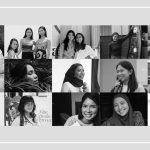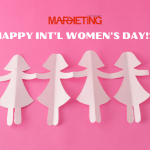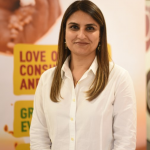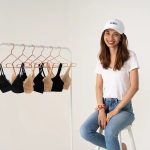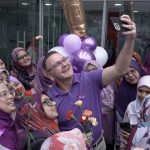Hui Tsin Yee, managing director of TBWA\Group Malaysia:
It’s a peculiar thing,
Women are well-represented within Malaysian ad agencies, from Dentsu Aegis reporting a 55% gender split of women in 2019, to locally-owned M&C Saatchi at a 70% female representation across their companies. We ourselves have a 71% female workforce. In fact, increasingly more women are entering the ad industry – partly due to flexible working arrangements and women-led programmes.
This has spilled over to marketing as a whole – many of our own talent crossing over to client side; female agency leaders moving to big tech companies; agency heads exiting to start-up businesses and create global brands.
Yet, even with an increase in female practitioners, when we look at content being produced in Malaysia, research shows that a massive 63% of audiences believe advertising conforms to their perceptions of gender stereotypes.
So, what’s the reason for this disconnect? Why with so many females in the industry are we still unable to reflect gender realities in the 21 st century?Malaysia is one of the most multi-cultural, multi-ethnic, and multi-lingual societies in Asia, if not the world. In order to co-exist with this richness of cultures, a code of respect evolved over the course of many generations. Not to question or challenge the behaviours, religion, or way of life of others – even if this obliged gender inequality.
This cautiousness to not offend has been upheld in media and advertising of the past. But as younger generations grow up in a hyper-connected world with information at their fingertips, they are having more intellectual engagement with culture and society. They’ve become much more progressive than marketers are giving them credit for, leaving brands stuck in a difficult situation between the generation gap.
How do brands move forward from here? How do they continue to connect and satisfy both the reformists and traditional? The bold approach, and one that we’ve seen many successful examples of is advocating for change – raising awareness and helping advance the traditionalists towards gender equality.
First and foremost this needs to be true to the core of the business and brand, and not just tied to one day of the year (IWD). With the speed and wealth of information available, people will be quick to call out a brand for being insincere and simply “bandwagoning”. One of the best recent examples of a change maker campaign is Pantene’s Wanita Besi (Iron Lady), turning an insult into a symbol of strength to inspire young girls to follow their passion regardless of what society thinks.
Standard Chartered is another brand that has been consistently championing gender equality, launching its WOWnita programme last year, specially designed for women entrepreneurs.
Jennifer Kang, Head of Corporate Affairs, Standard Chartered Malaysia said: “WOWnita aims to help grow and nurture women entrepreneurs towards success through providing financial education and thought leadership, financial solutions and networking opportunities. We also have our Goal programme to equip young girls with the tools they need to be ready to embark on a career, drive the economic empowerment of girls and
improve gender balance in businesses.”
A great example of how brands should have sustainable actions and tools to back their words. But for the majority of brands, who are not endemic to female audiences, they still play a fundamental role and should ensure they are representing true gender realities.On first glance at data from Geena Davis Institute on Gender in Media, we might take some encouragement that women accounted for 47% of screen time in the Malaysian advertisements analysed in 2019. But once we scratch the surface, it’s clear that inequality still exists and ads are conforming to gender stereotypes.
The same study shows that male characters received 63% of speaking time in Malaysian ads, with only Retail, Consumer Packaged Goods, and Health Care, having high female representation. Automotive, Business/Industrial, and Finance ads across the globe only offered 28%, 29%, and 38% of female screen time, respectively.
One excuse is that businesses are conflicted with industry biases and merely trying to target the ideals of their perceived demographic. However, according to the study, 66% of females turn off media when it negatively stereotypes women – which I’d say is a much larger audience to take into consideration.
Moreover, 85% of women think the advertising world needs to catch up to the real world when it comes to gender roles. Brands are simply not finding relevance with this sizable and influential audience. Marketers need to stop typecasting all women as the same. We forget there’s a diverse set of women, and being inclusive with their diversities is just as important (hijabsters, divorcees, students, mothers, sisters, leaders etc.).
It’s complex in Malaysia, but we’ve done it before. An incredible ad guru, creative leader and storyteller, by the name of Yasmin Ahmad was the epitome of grace and courage. She told stories portraying how females could define womanhood, through intricacies and complex layers of race and religion – not just popular among women but resonating with the whole of Malaysia.
In advertising, we always speak about the importance of impactful storytelling and being culturally relevant; so with the sheer amount of daily ads people are exposed to in this digital age, we’re surely having a profound effect on society in the real world. It’s time to live up to that power, be brave, and represent women better.
MARKETING Magazine is not responsible for the content of external sites.
An afternoon of conversations we never had, with leaders most of you never met.
Discover what’s possible from those who made it possible. Plus a preview of The HAM Agency Rankings REPORT 2024.
Limited seats: [email protected]
BOOK SEATS NOW

